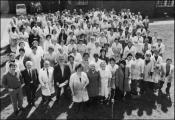Search the Collection
Use the check boxes to narrow your search15 records were found.
VSW031 Annest Wiliam, Hodges, Fforestfach;Mettoys, Fforestfach
C. 1954-5 Annest worked at the Mettoy factory and Hodges as a summer-holiday worker. She worked on the assembly line making metal toys and she had to wear leather gloves. It was inexorable, regimented work, especially when the time and motion man came around. Another summer she worked on the switchboard at Hodges. In Mettoys she felt pride at having done something with her own hands.VSW032 Jenny Sabine, Prestcold Fridges, Jersey Marine;Penn Elastic, Fforestfach
Jenny describes Swansea after the bombing during the war. She decided to become a secretary and worked at the Prestcold Fridges factory for 4 months in 1961. She describes the journey to work, and clocking out. There wasn’t a lot to do there but she was asked, as a woman, to do sound trials on washing machines. She had little contact with the factory floor. She moved to Penn Elastic which made elastic net for corsetry, 1961. Men did the managerial jobs and there was some verbal and sexual harassment. She left to work at the university library.VSW035 Grace Beaman, Unit Superheaters, The Strand;Mettoys, Fforestfach
Grace left school at 15 (1963) because her father didn’t think it was worth educating a girl. She worked in shops and then in Mettoys for three years. Women were dextrous on the assembly line. Security and bags searched. Women would fix their own machines if broken. She moved to Unit Superheaters where she drove a gantry (overhead crane) – 13 other women also driving. Joined union because told she would lose her job if she didn’t. Section of Unit Superheaters had Gamma rays so women not allowed to work there. In Mettoys went to social club in Hafod and started a darts league. Eventually she bought the post office in Landore and got a degree in 2000.VSW040 Ann Harrison, Mettoys, Fforestfach
Ann attended Technical School to learn to type and was employed to work in the office at Mettoys. But she thought the office girls were better than her so she moved to the shop floor. She made James Bond cars. She had spina bifida but could walk around. Her mother worked there too and tried to protect her from the crude jokes. Piecework and helping one another. She married in 1967.VSW041 Patricia Ridd, Addis, Swansea;Windsmoor, Swansea;Smith's Crisps, Swansea;Mettoys, Fforestfach;Corona, Swansea;Walkers, Swansea
Patricia left Swansea Technical School at 15 (1961) to work in the Addis factory, making hand brushes. She was on inspection. She stayed there 2 years. Then on to Windsmoor sewing factory, making army clothes (again 2 years). Then she had a son and went back to Addis – now producing mascara brushes. Next she went to Smith’s Crisps. The crisps would come down a funnel and she would put the salt in, in little blue bags. Stayed 6 months and moved to Corona –for 26 years (1966-92) . She started on the line watching bottles of pop going back and fore. She also worked in the cellar room making pop and cider, then on the fork-lift, moving pallets. When the factory closed (1992) she went to Walkers crisps, again working on the fork-lift and night shift too. The factory floor was a bit manic. Buying seconds in the factories. Walkers - if there was no work – night off and no pay. Accidents – Acid burns in Corona and in hospital. Certificates for driving the forklift. Walkers’ and Corona cold – the pop froze. Hardly saw husband because of shifts. Corona was like a family – best factory. She worked in factories 1961-98. Later she worked in the university.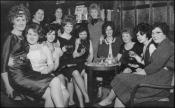

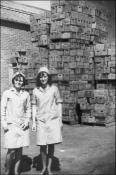
VSW043 Margaret Morris, Addis, Swansea;Mettoys, Fforestfach
Margaret left school at 15 (1964) and started in Addis, until her son was born in 1971. She made plastic pegs but had many accidents – cuts on her hands. She was moved to work in the mill – coating - dipping wood. They used Bostick to stick bristles – fumes made you high. Heavy work to lift trays. She also made eyelash brushes. Socialising at weekends. You put in an order if you wanted any factory goods. The factory also made Xmas trees. The paint place was outside the main buildings because of safety. Ten minutes only to have a smoke in the toilet. Paid through the bank. After this she went to Mettoys. She liked making garages – her first job, then she was moved to the conveyor belt. She worked with two hands putting wheels on toy cars. She stayed there c. 2 years. Had to keep going in Mettoys, The girls would send sweets down the line to one another. Or a note – SMILE! They learned to lip-read. At Xmas they could buy bags of toys – rejects. They had a pedal to push to note how many cars were done. If you were fast – earned a bonus. Men fetched and carried the components (windows / doors etc) to them.
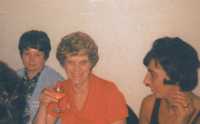
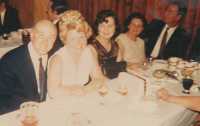
VSW047 Madge Sinclair, Mettoys, Fforestfach
Photos of Mettoys Factory, Forestfach, Swansea, 1960sNo transcript of the interview is available
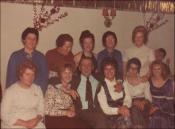

VSW048 Eira John, Mettoys, Forestfach
Eira had to leave grammar school because of the war and she joined the WAAFs. Then she got married and had children. She began in Mettoys in c.1960, packing in the warehouse to earn extra money. Christmas time was very busy, with sales of toys. She was not a member of a union. There were thousands of women in the factory. She enjoyed the comradeship. Her husband was in a supervisory role in Mettoys too. She left to work in the DVLA.

VSW049 Monica Walters, Smiths Crisps, Fforestfach
Monica left school at 15 (1952) and went to work in Woolworth’s but within months was in Smiths’ Crisps. At first she stamped numbers on tins of crisps and stacked them for the lorries. Then she moved to boxing. Then they had a machine and she would take tins off the rollers, take packets off the trays and put lids on. Picking up so many packets of crisps wore her fingers down. Nurse examining fingers every morning. She had to do 800 tins a day for her wages + bonus for every hundred after. Upstairs they made the crisps – horrible smell. Very busy in summer, time dragged in winter. She wore a big thick apron for boxing work. Bonus and dinner Xmas time. Turban provided. Tins numbered. Music played and some workers jived. She left when she got married c.1957 – her husband disapproved. Teasing the men drivers. Annual trip. On her marriage they gave her a Westminster chime clock.VSW050 Beryl Jones, Avon Inflatables, Dafen;Hodges, Fforestfach
Beryl began working in Hodges in 1960/1 (until 1964) after leaving school at 15. She knocked on the door of the first factory she came to. They made men’s suits: men cut the material out and the girls sewed. She worked in the cutting room. She notes the importance of unionism in both factories, giving her mother her pay packet; the Swansea girls; the monkey parade. After marrying and bringing up the children she worked in Avon Inflatables from 1980 making dinghies. She describes the smell of glue and a complaint because she spoke Welsh. You learn about life in a factory. She left in 1990.VSW051 Jean Evans, Mettoys, Fforestfach;John Stanton, Abertawe
Jean left school at 15 (1960) and worked in the Home and Colonial shop Swansea. After c.8 months she moved to Mettoys. Hard work, everything was weighed and she was paid according to what was in the pallets. Moved around – onto assembly making toys. She left when she had her boy but returned on evening shift after eight months. She was in the Fettling Dept., cleaning car parts. Then went on to inspecting, ready for packing. Reported sub-standard work. Then given more responsibility – in charge of others. Left because tired of evening work and landed up in John Stanton sewing factory. But returned in three weeks to Mettoys. Left then to work as a domestic. In Mettoys the manager did spot checks. The white coats were mostly men. She came out of her shell in the factory. They had fun.VSW052 Cynthia Rix, Mettoys, Fforestfach;Windsmoor, Swansea;Llamas, Swansea
Cynthia describes the war in Swansea. She left school at 14 (1952) – Jewish people were desperate for youngsters (cheap) to work in their factories. She began in Llamas factory making knickers, football jerseys etc. but was sacked after two weeks. She couldn’t sew and hid a garment she had spoiled. Notice outside Windsmoor’s (women’s clothing) seeking workers. She was sent to fetch striped cotton and a bucket of steam! At Windsmoor the Union rep. called them out on strike for wages – 17 of them sacked. Then she moved to Mettoys and ‘that’s when my life began.’ Hilarious and working on a team. She worked on the assembly line – different jobs – to packing. One friend was dismissed for trying to steal a toy rocket. Cynthia left and worked in cafes and shops. One woman lost her hand in Mettoys- given a light job and compensation. Very little bad language there. In Llamas they were dogsbodies – Mettoys the best. She had her ears pierced in the toilets there. Her brother was lifted and put on a peg when he worked in Windsmoor’s. Novices asked to get a screwdriver without a blade. Togetherness.VSW059 Hilda Glenys Rees (Glenys), Louis Marx, Swansea;Smiths Crisps, Swansea;Mettoys, Fforestfach
Glenys left school at 14 (1946) and followed her friends into the factories. She worked in Mettoys for the Xmas rush, 1947 and then in the new Louis Marx factory. Her number was 312. Office staff ‘a bit above’ them – had tablecloths in the canteen. She made pop guns and Daleks. Piecework. Time and motion man working out targets. She left when she was pregnant (Worked 1948-54). Maternity benefit if you worked six months of pregnancy. Singing on bus. Unions – stop work if too hot. Variety in work. Football and netball teams and concerts in canteen. Handpainting toy cars. Cleanliness. Had something in her eye - to hospital. Everyone helping one another. Security at the gate. Strong language. In Mettoys listened to Queen’s wedding on the tannoy. At Louis Marx one minute’s silence when King died. Banter. Later returned part-time to Louis Marx. She also worked in Smith’s Crisps before returning to Louis Marx – frightened of big machine. Smelled of crisps. Worked like a robot there.VSW060 Joan Gibbon, Fisher Price, Fforestfach;Mettoys, Fforestfach
After leaving school at 14, working in a laundry, getting married and having children Joan began working part-time in Fisher Price Factory making wooden toys in c.1973. They were afraid of the foreman because if the machines broke it stopped the assembly line. You had targets and bonuses. In winter it was very cold and in summer too hot. She moved to Mettoys c.1973 when Fisher Price closed. Again she left because the factory closed c.1983.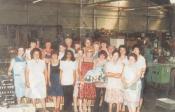
VSW061 Eirlys Lewis, Vandervell Productions, Cardiff;Mettoys, Fforestfach;Alan Paine, Ammanford;Pullmans Flexolators, Ammanford
Eirlys left school at 15 (1964) and started in Pullman’s Flexolators, making car seats, springs etc. Everyone got on there. Smoking while working. Paying Union fees but not the % to the Labour Party. Dirty work. One dangerous job because of acid - coating things with paint. Teasing young workers – fetching elbow grease. She learned to live there. Lots of swearing. She heard about the Aberfan disaster when in the Alan Paine factory. She made a mistake going there (stayed only 9 months); then to Mettoys for 3 years (1966-9) on the assembly making toy cars. Some of the girls were very fit. Then she worked on a farm for 2 years. In 1972 she went to Vandervell Products, Splott, Cardiff – for 10 years making car and lorry parts. They opened a new department (c.1976) and girls now did the same jobs as the men. One man asked for her help. Interviewed by the BBC about her job as a mechanic. Social club – she played ninepin bowling. Good money. One woman lost her fingers in a machine – compensation. In 1976 there was a strike about being too hot – she refused to join because she believed the company was doing its best. She was sent to ‘coventry’ for 4 months. One woman objected to her speaking Welsh – answered her back. Girls not allowed to work on night shift. Then she got married and worked for periods in Llangadog milk and Carmarthen cheese factories.